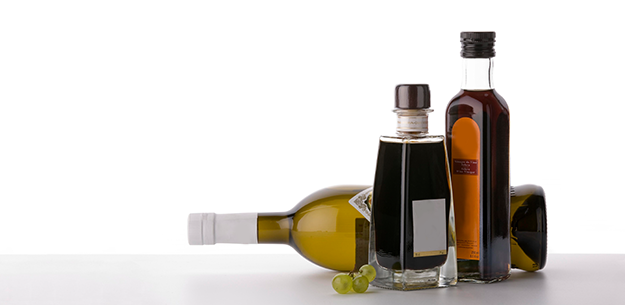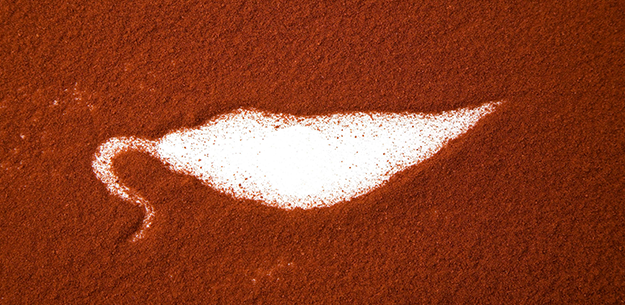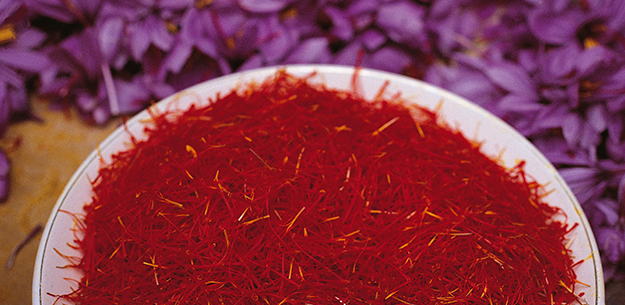.png.transform/rendition-xs/image_image%20(1).png)
Vinegar & Spices
The average Spaniard consumes between 1.4 and 2 liters of vinegar a year; on salads, in typical dishes such as gazpacho, in the huge variety of Spanish pickled vegetables, and as an aromatic element in both traditional and avant-garde cuisine. Spain is the world’s largest producer of top-class saffron, and Spanish saffron from PDO Azafrán de La Mancha is considered the best in the world. Pimentón, not paprika, is one of the most emblematic fine products from Spain.
VINEGAR
Originally attributed to an error in the winemaking process, wine vinegar was referred to by the Romans as “vinum acre”, or sour wine. For centuries these aromatic liquids have been lending their pungent and complex aromas to Spain’s gastronomy. They continue to do so today, particularly in those areas where their traditional elaboration has Protected Denomination of Origin (PDO) status.
The average Spaniard consumes between 1.4 and 2 liters of vinegar a year; on salads, in typical dishes such as gazpacho, in the huge variety of Spanish pickled vegetables, and as an aromatic element in both traditional and avant-garde cuisine. Quality vinegar is easy to find in Spain, as three of the five types of vinegar in Europe with PDO classification are Spanish: PDO Vinagre de Jerez (deeply aromatic, mahogany-colored Sherry vinegars, aged for a minimum of 6 months), PDO Vinagre de Condado de Huelva (dark chestnut-colored and sharply dry), and PDO Vinagre de Montilla-Moriles (semi-sweet, or sweet-and-sour vinegars made from Pedro Ximénez grapes). All of the varieties of vinegar produced under these designations must be made from the correspondingly protected wines, and the two products often share the same installations, barrels and age-old techniques.
The most significant of these involves the aging method used for all three vinegar denominations. This process, known as criaderas (nurseries) and solera (floor), involves aging the vinegars in rows of barrels that are stacked on top of each other in pyramid fashion. The bottom row, or solera, contains the oldest vinegar, from which a portion is taken and bottled. As this happens, the same amount of vinegar from each of the higher casks, or criaderas, is moved to the barrel below, and new vinegar is added to the barrels on the top row.
Other types of wine vinegars are made in renowned Spanish wine regions like Galicia, Castile-La Mancha, La Rioja and Catalonia, where they might start as Albariño, Tempranillo, Garnacha or Chardonnay wines, to name a few.
Aromatized vinegars made with things like garlic, herbs, lavender, saffron or fruit are also popular traditional products in Spain, as is the smooth, fine vinegar made from cider – a typical drink in the Principality of Asturias and the province of Guipúzcoa (Basque Country).
SPICES
Saffron
Before the arrival of the Moors, spices and condiments other than salt were used sparingly on the Iberian Peninsula. This seems surprising now given the importance of saffron and pimentón in Spanish gastronomy. In fact, it would be difficult to imagine emblematic Spanish dishes like paella, or products like chorizo, without them.
Saffron originated in the Near East and was brought to Spain by the Moors, who successfully cultivated it on the plains of La Mancha. The use of saffron, which is also a feature of many Arab dishes, is a key marker for the influence of Arab culture on Spanish gastronomy. From Spain, saffron traveled to the rest of Europe where it gained enormous popularity and prestige.
Saffron is obtained from the stigma of the saffron crocus, a bulb which flowers for just a few days in the month of October. Cultivation is very laborious. The soil needs a lot of care and all the work involved in production, harvesting, separation of the stigmas and subsequent drying has to be done by hand. About 10,000 flowers are needed to gather 1 kilo (2.2 lbs.) of saffron.
Spain is the world’s largest producer of top-class saffron, and Spanish saffron from PDO Azafrán de La Mancha is considered the best in the world due to its bright red color, penetrating, toasty aromas of flowers and dry hay; and great coloring power.
Saffron cultivation also has a long and traditional history in the area known as Ribera del Jiloca, in the province of Teruel (Aragón). Although production is very limited, its high quality has attracted the attention of the Slow Food movement, which has classified it as a ‘flagship’ product in order to work with growers towards the common goal of preserving this select and endangered Spanish product.
Pimentón
Pimentón, or Spanish paprika, refers to the fine, bright red powder obtained from drying and crushing certain varieties of red pepper. This magnificent seasoning gives a characteristic flavor and color to many traditional Spanish dishes, cured meat products and cheeses.
The history of pimentón is inexorably linked to that of the pepper from which it is made. The first pepper seeds were brought from America by Christopher Columbus in 1493 and given to the monks at Extremadura's Guadalupe Monastery. From there, this product was taken to the Monastery in Yuste, in the district of La Vera (Cáceres, Extremadura), followed by La Ñora monastery in Murcia, and finally to other Hieronymite abbeys and monasteries. Not surprisingly, PDO Pimentón de La Vera and PDO Pimentón de Murcia are the main pimentón production areas today.
The peppers used in Murcia are the Bola or Ñora peppers which, when ripe, are generally dried in the sun for several days before crushing. Murcian pimentón is bright red in color and has an intense, penetrating aroma and a sweet flavor.
In La Vera, in addition to the Bola variety, peppers from the Ocales group are also grown. These are combined in different ways to produce pimentón which can be sweet, sweet and sour, or spicy.
The drying process generally takes place on racks placed above hot oak coals or with hot air. This gives the end product its characteristic smoky flavor. Special stones are used to grind the peppers, giving rise to a bright color, penetrating aroma and flavor, and strong coloring potential.
A considerable proportion of all Spanish pimentón is used in charcuterie to impart flavor and color, as well as to act as a natural preservative. The spice blends well with almost all foods and is used to season garlic soups, Galician-style octopus, traditional stews and infinite other dishes. Undoubtedly, pimentón is one of Spain’s great contributions to international cuisine.
Quality vinegar is easy to find in Spain, as three of the five types of vinegar in Europe with PDO classification are Spanish: PDO Vinagre de Jerez, PDO Vinagre de Condado de Huelva and PDO Vinagre de Montilla-Moriles. Besides, there are two emblematic spices from Spain: saffron and pimentón.
Santiago Botas/@ICEX. Edited by Adrienne Smith/@ICEX



- Spanish vinegars
- Spanish pimentón
- Spanish pimentón

